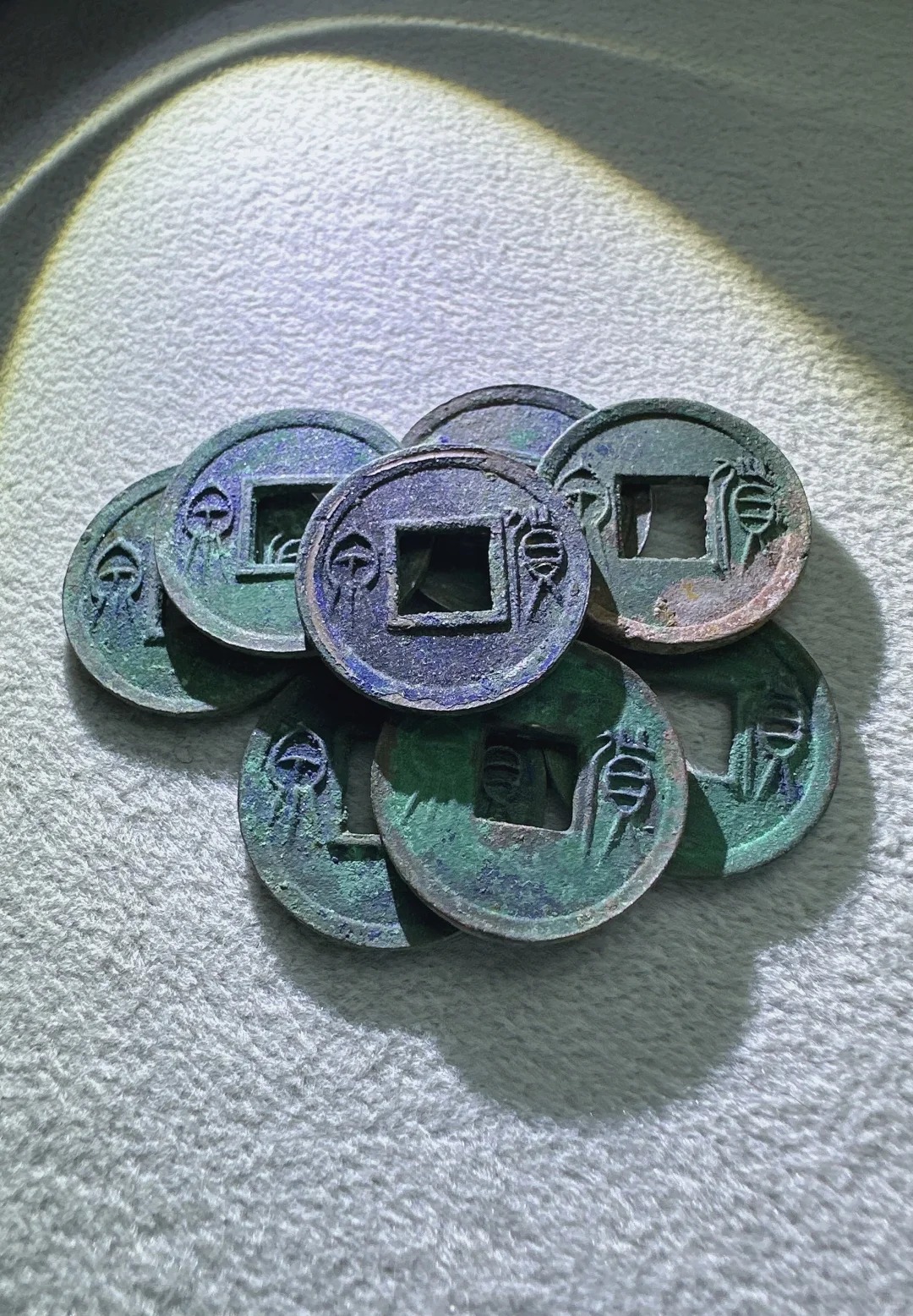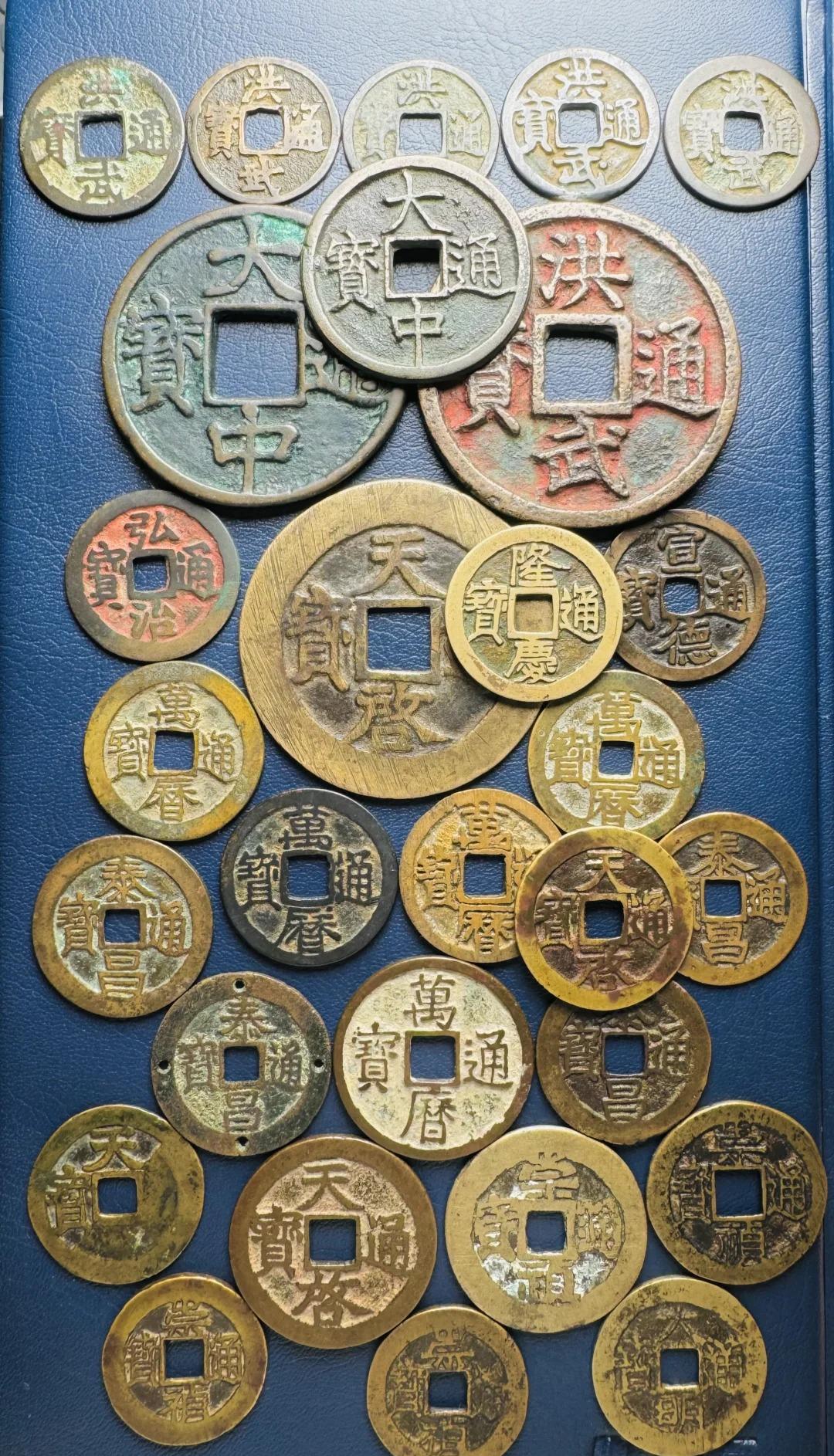Introduction to Chinese Coins
Chinese coinage boasts a rich history spanning over 2,500 years, making it one of the world’s oldest monetary systems. These coins are not merely currency; they are tangible links to China’s past, offering insights into its economic, political, and cultural evolution.
From the early days of spade and knife money to the intricate cash coins of imperial dynasties, Chinese coins have played a crucial role in shaping the nation’s identity. They have served as mediums of exchange, symbols of power, and even tools for divination.

Ancient Chinese Coins (Pre-Qin to Tang Dynasty)
The earliest forms of Chinese currency were quite different from what we recognize as coins today:
- Spade and knife money: Used in the Zhou Dynasty (1046-256 BCE), these were cast in the shapes of agricultural tools.
- Ban Liang coins: Introduced by the first emperor of unified China, Qin Shi Huang, these round coins with square holes set the standard for future Chinese coinage.
- Wu Zhu coins: Widely used during the Han Dynasty (202 BCE – 220 CE), these coins remained in circulation for centuries.
- Kai Yuan Tong Bao: Introduced in the Tang Dynasty (618-907 CE), this coin design became a model for subsequent dynasties.
Imperial Chinese Coins (Song to Qing Dynasty)
As China’s imperial system evolved, so did its coinage:
| Dynasty | Key Coin Features |
|---|---|
| Song (960-1279) | Thin, well-cast coins with elegant calligraphy |
| Ming (1368-1644) | Return to simpler designs, often with reign titles |
| Qing (1644-1911) | Coins with Manchu script alongside Chinese characters |
Identifying features often include reign titles, mint marks, and distinctive calligraphy styles.
Key Elements in Chinese Coin Identification
When examining Chinese coins, pay attention to:
- Shape and size: Most imperial coins are round with square holes, but sizes vary by era.
- Inscriptions: Usually include reign titles or slogans in Chinese characters.
- Mint marks: Small characters or symbols indicating the coin’s origin.
- Metal composition: Typically bronze or brass, with some silver and gold for special issues.

Common Types of Chinese Cash Coins
The most recognizable Chinese coins are the cash coins, characterized by:
- Round shape with a square hole in the center
- Four characters on the obverse, typically reading top-bottom-right-left
- Reverse side often plain, sometimes with additional characters or symbols
Reign titles on these coins can help date them. For example, “Qian Long Tong Bao” indicates a coin from Emperor Qianlong’s reign (1736-1795) in the Qing Dynasty.

Modern Chinese Coins (Republic Era to Present)
The fall of the imperial system in 1911 brought significant changes to Chinese coinage:
- Republic of China coins: Featured modern designs, often with Sun Yat-sen’s portrait.
- People’s Republic of China coins: Initially based on the yuan system, later introducing jiao and fen denominations.
- Commemorative coins: Special issues celebrating historical events or cultural themes, popular among collectors.
Tips for Travelers and Collectors
- Finding authentic coins:
- Visit reputable antique markets or coin shops in major cities.
- Explore smaller towns known for historical significance.
- Avoiding counterfeits:
- Study authentic coins in museums before purchasing.
- Be wary of deals that seem too good to be true.
- Consider purchasing from certified dealers.
- Preservation:
- Handle old coins with clean, dry hands or wear gloves.
- Store in acid-free holders in a cool, dry place.
- Avoid cleaning old coins, as it can reduce their value.
- Legal considerations:
- Check local laws regarding the purchase and export of antique coins.
- Some ancient coins may be considered cultural relics and restricted from export.
- Always declare any coin purchases when passing through customs.
For the curious traveler, exploring Chinese coins offers a unique window into the country’s vast history. Whether you’re an avid collector or simply interested in understanding more about Chinese culture, the study of these small metal discs can provide hours of fascination and learning.
Remember, while the allure of owning a piece of history is strong, the most valuable aspect of Chinese coin exploration is often the knowledge and appreciation gained in the process. As you travel through China, take time to visit numismatic museums and local markets. Each coin tells a story, and by learning to read these metallic tales, you’ll gain a deeper understanding of China’s rich cultural tapestry.





